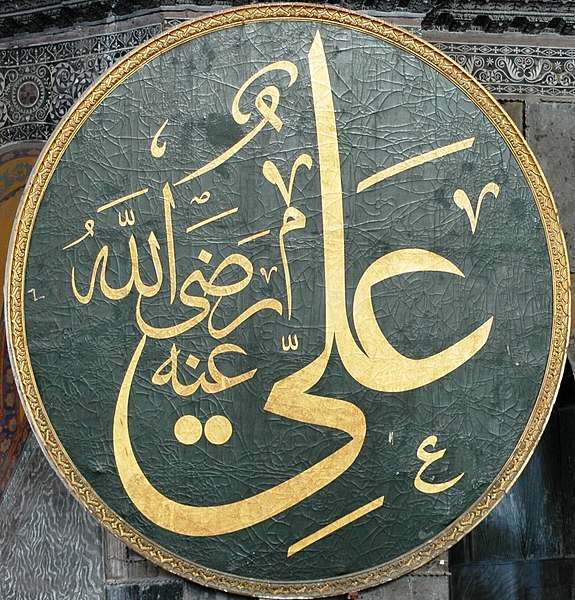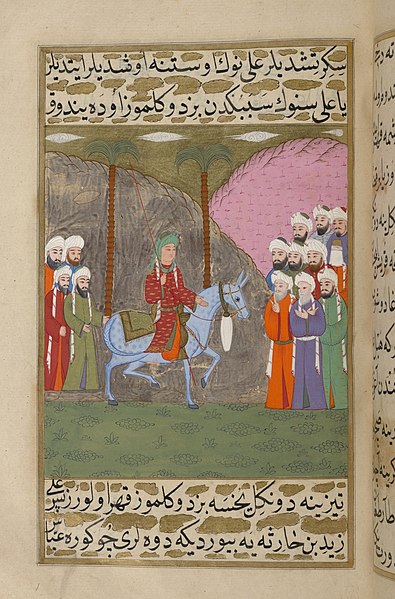Zulfaqar, also spelled Zu al-Faqar, Zulfakar, Dhu al-Faqar, or Dhulfaqar), is the sword of Ali ibn Abi Talib.
A Cirebonese flag with a Chinese influenced lion with the Zulfiqar, and Ali represented as a lion (dated to the late 18th or the 19th century)
An early 19th-century Ottoman Zulfiqar flag
Calligraphic panel in praise of Ali. The large inscription at the top reads lā fatā ʾilā ʿAlī lā sayf ʾilā Ḏū l-Faqār meaning "There is no Hero but Ali, [and] there is no sword but Dhu-l-Faqar.
A stamped amulet, presumably made in India in the 19th century for a Shia patron. The amulet comprises gnostic squares, Qur'anic verses (including ayat al-kursi (2:255) running around the frame), divine or holy names, besides a depiction of Zulfiqar at the center.
Ali ibn Abi Talib was the cousin and son-in-law of the Islamic prophet Muhammad, and was the fourth Rashidun caliph who ruled from 656 to 661, as well as the first Shia imam. Born to Abu Talib ibn Abd al-Muttalib and Fatima bint Asad, a young Ali was raised by his elder cousin Muhammad and was among the first to accept his teachings.
Calligraphic panel bearing Ali's name at the Hagia Sophia
Gouache illustration of Ali (centre) and his sons, Hasan and Husayn, 1838, by an unknown painter
Ali in an illustrated copy of the Turkish epic Siyer-i nebi
Muhammad and Ali, a folio from the fifteenth century Iranian epic Khavarannama








